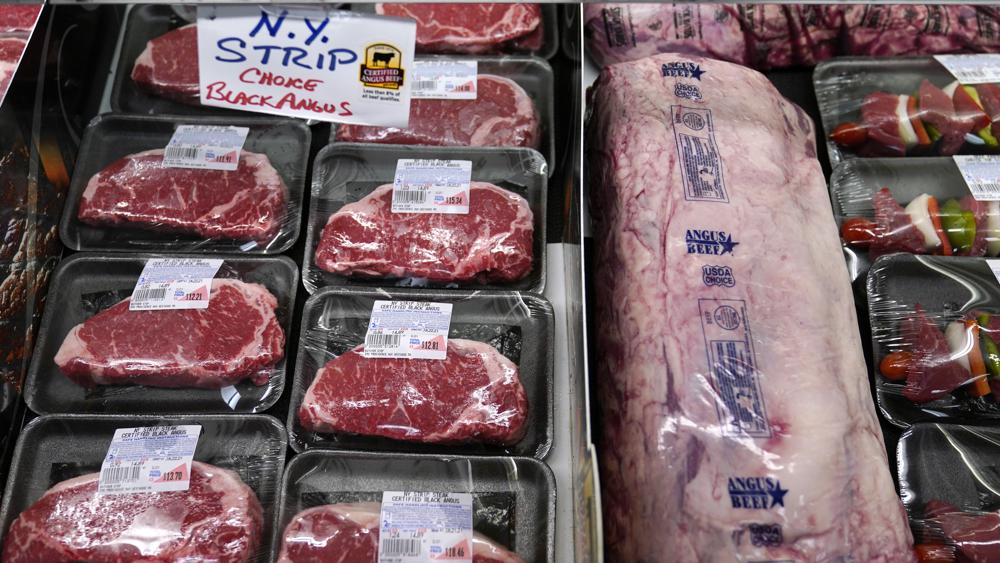
U.S. producer prices surged 10.8% in May from a year earlier, underscoring the ongoing threat to the economy from inflation that shows no sign of slowing.
Tuesday’s report from the Labor Department showed that the producer price index — which measures inflation before it reaches consumers — rose at slightly slower pace last month than in April, when it jumped 10.9% from a year earlier, and is down from an 11.5% yearly gain in March.
On a monthly basis, producer prices climbed 0.8% in May from April, above the previous month, when they increased 0.4%.
Energy prices, led by gas, rose 5% just in May from April. Another big driver of the price gains last month was a sharp 2.9% increase in the cost of truck freight hauling, a sign that supply chain problems still aren’t fully resolved. Food costs were unchanged.
The figures indicate that rising prices will continue to erode Americans’ paychecks and wreak havoc on household budgets in the coming months. Inflation has created major political headaches for President Joe Biden and congressional Democrats and has forced the Federal Reserve into a series of rapid interest rate hikes intended to slow the economy and cool price increases.
On Friday, the government reported that inflation — as measured by the consumer price index — jumped to a new 40-year high of 8.6% in May, a surprise gain that disappointed expectations that price increases might be slowing. Gas and food costs rose sharply, pushed higher by Russia’s invasion of Ukraine, but the costs for rent, new and used cars, medical care, and clothing also rose, evidence that inflation is spreading more broadly through the economy.
The Federal Reserve is expected to hike its short-term interest rate by three-quarters of a point on Wednesday, the largest increase since 1994, as it ramps up its efforts to rein in higher prices.
The producer price data captures inflation at an earlier stage of production and can sometimes signal where consumer prices are headed. It also feeds into the Federal Reserve’s preferred measure of inflation, the personal consumption expenditures price index.
Strong consumer spending has pushed up demand for a range of goods and services, which has in turn overwhelmed supply chains, creating shortages in some cases and pushing up prices. Greater demand for travel this spring and summer has also sent hotel and airfare prices soaring.
How long that consumer demand will last is a key question for the economy going forward. Millions of Americans have enjoyed solid pay raises in the past year, including lower-income workers at restaurants, hotels, and warehouses.
Consumers also have greater savings than is typically the case from government stimulus checks and because they weren’t able to spend as much on travel and entertainment in the past two years. Those savings are supporting ongoing spending even amid high prices.
Yet prices are rising at a faster pace than wages, on average, suggesting that eventually consumers may have little choice but to pull back on spending.
___
Republished with permission of The Associated Press.




2 comments
ZTom
June 16, 2022 at 3:05 pm
I’m being paid with 88 dollars/hr to work part time from home. I’ve certainly not realized like it’d even achievable however one of my confidant friend was collecting $25,000 within six weeks by working this top job & she had influenced me to try…Know further instructions on going following web-link >>> Rotf.lol/USAJOBS
Nancy
June 16, 2022 at 3:06 pm
I’m being paid with 88 dollars/hr to work part time from home. I’ve certainly not realized like it’d even achievable however one of my confidant friend was collecting $25,000 within six weeks by working this top job & she had influenced me to try…
Know further instructions on going following web-link >>> 𝗕𝗨𝗭𝗭𝗝𝗢𝗜𝗡.𝗖𝗢𝗠
Comments are closed.